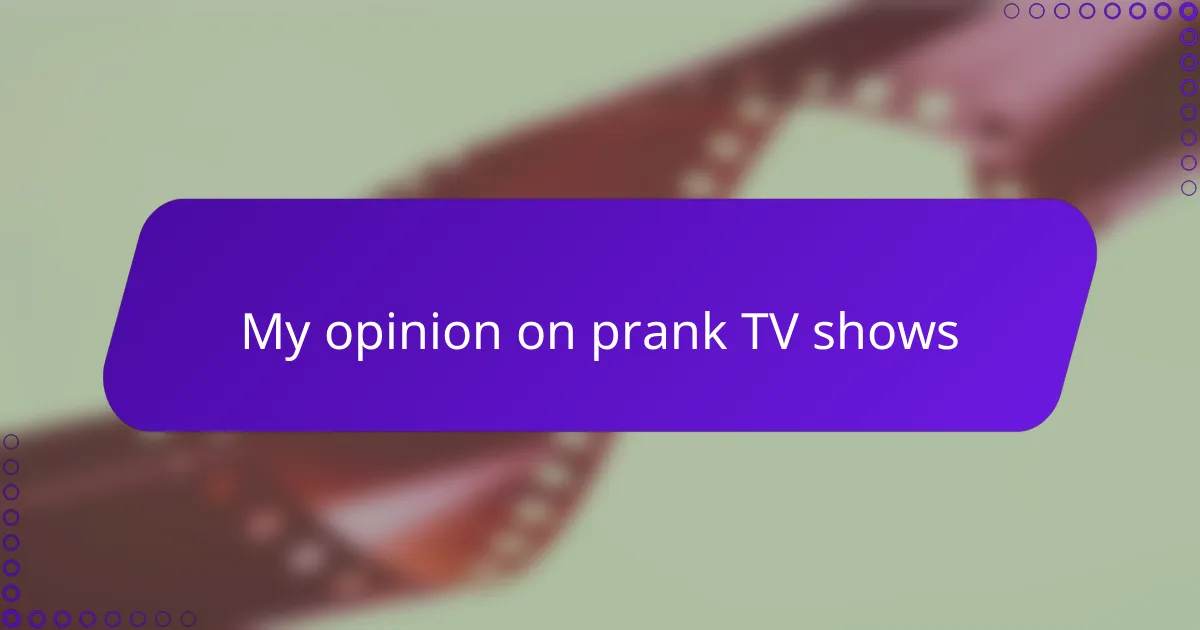Key takeaways
- Prank TV shows rely on genuine reactions to create humor and entertainment, appealing to viewers’ emotions.
- The success of a prank hinges on timing and creativity, but ethical considerations are crucial to prevent discomfort or embarrassment.
- Shared experiences from watching pranks can foster camaraderie among viewers, making the humor more enjoyable.
- Responsible enjoyment of prank shows involves recognizing the balance between humor and respect for participants’ feelings.
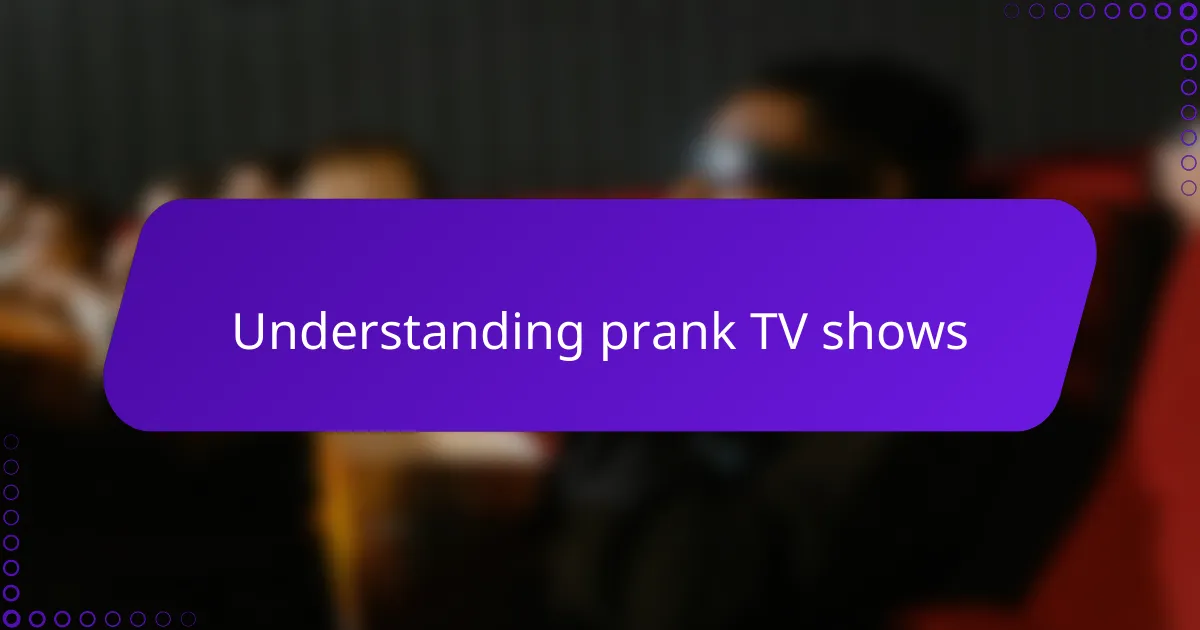
Understanding prank TV shows
Prank TV shows have a unique way of blending humor with surprise, and I find that quite fascinating. They rely on unsuspecting individuals reacting genuinely to unexpected situations, which often leads to moments of sheer entertainment. Have you ever been caught off guard by a prank and couldn’t help but laugh despite yourself? That genuine reaction is the heart of these shows.
From my experience, the success of a prank TV show hinges on timing and creativity. When done well, the prank feels fresh and lighthearted, making both participants and viewers smile. However, I also wonder where the line should be drawn—when does a prank cross from funny to uncomfortable? It’s a delicate balance that producers must navigate carefully.
What strikes me most is how these shows play with human nature—the element of surprise taps into our emotions in a raw, unfiltered way. Seeing someone’s honest reaction reminds me why I keep tuning in; it’s real laughter, often contagious, and that’s something scripted content rarely achieves. Isn’t that what makes prank shows endlessly appealing?
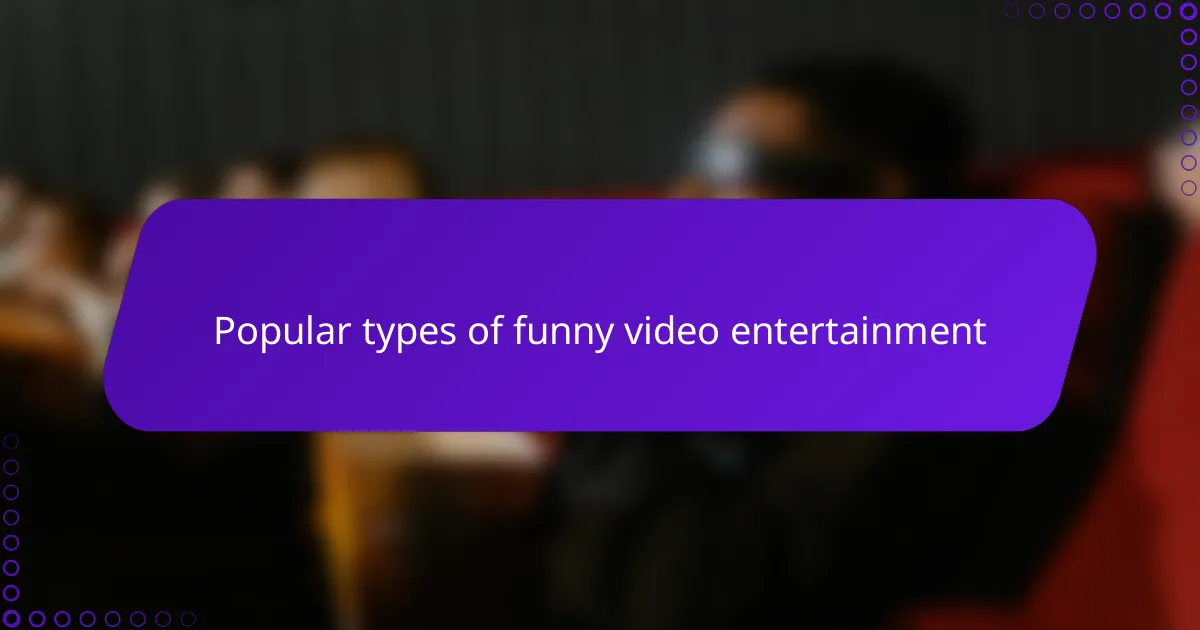
Popular types of funny video entertainment
Funny videos come in so many shapes and sizes, but some types seem to capture everyone’s attention more than others. I often find myself drawn to slapstick clips where people hilariously trip or stumble—the simplicity of physical comedy just never gets old. Have you noticed how these moments don’t need words to make us laugh out loud?
Then there are clever hidden camera bits where humor sneaks up on you, much like prank TV shows. I remember watching a compilation where strangers were suddenly part of an absurd scenario—it was their bewildered expressions that made it unforgettable. Isn’t it amazing how spontaneous reactions add a whole new layer of amusement?
Of course, viral pet videos have their own charm that’s hard to beat. I once stumbled upon a cat “arguing” with a dog, and the way their antics unfolded was pure comedy gold. Do you think animals have a natural talent for making us smile, or is it just the unpredictability of their behavior that hooks us in?
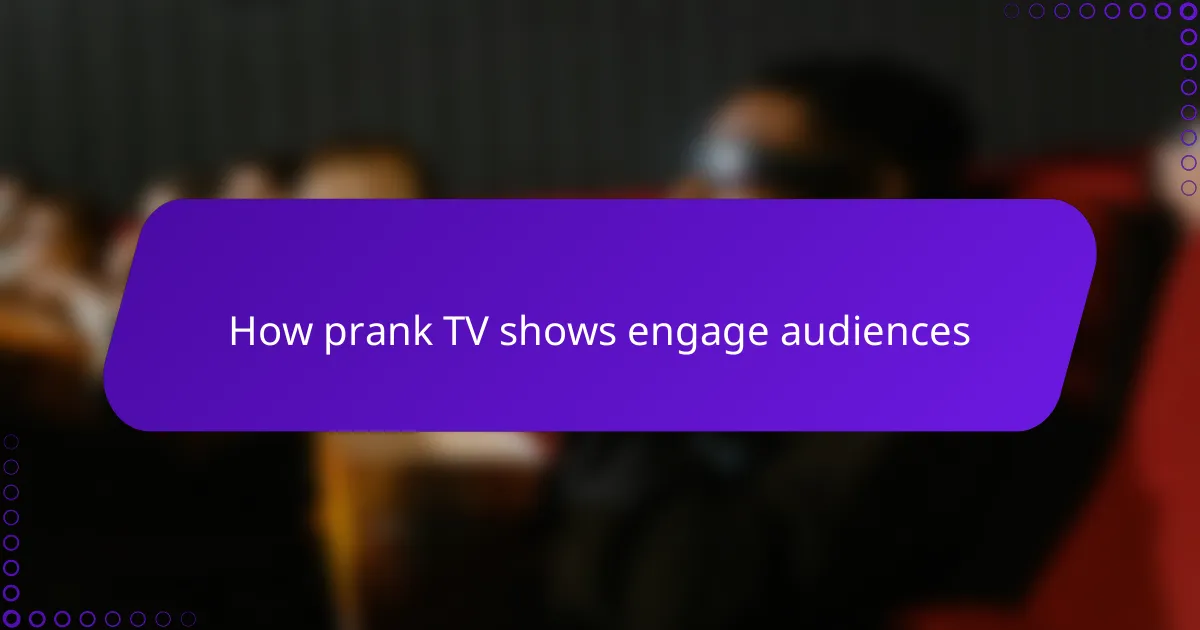
How prank TV shows engage audiences
What really grabs me about prank TV shows is their ability to pull viewers in through anticipation. You find yourself holding your breath, waiting to see how someone will react when the prank unfolds. That mix of suspense and humor creates a rollercoaster of emotions that keeps me glued to the screen.
I’ve noticed these shows also engage audiences by making us feel like part of the joke, even if we’re just watching from afar. When a prank is clever and lighthearted, I can’t help but feel a shared connection with everyone in the room, laughing together at the unexpected twist. Doesn’t that sense of communal fun make the experience much more enjoyable?
Sometimes, I wonder if the best pranks are those that reveal something genuine about people’s character. Seeing honest surprise or good-natured forgiveness after being tricked adds a warmth to the entertainment. It’s those moments that stay with me long after the laughter fades—moments that remind us why prank shows continue to captivate audiences worldwide.
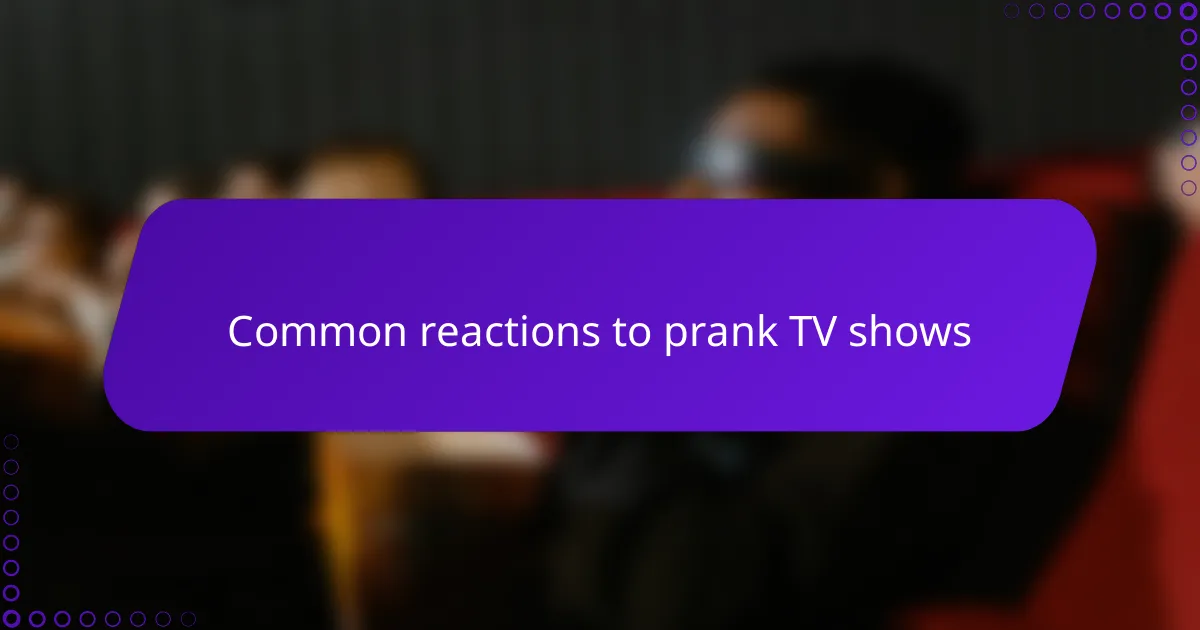
Common reactions to prank TV shows
One of the most common reactions I notice on prank TV shows is that initial shock—people freeze, their eyes widen, and they try to make sense of what just happened. I remember watching a prank where someone was convinced their car had disappeared, and their disbelief was so genuine it made me chuckle and feel a bit empathetic at the same time. Have you ever reacted like that, caught between confusion and immediate laughter?
Laughter often follows quickly, though it’s interesting to see how it varies—some burst out laughing right away, while others need a moment to process before breaking into a smile. From what I’ve seen, this delay makes the experience relatable because it mirrors how we all sometimes react in real life when caught off guard. It’s almost like a shared human moment, don’t you think?
Occasionally, I’ve noticed a more mixed response—some people feel annoyed or embarrassed, which makes me reflect on the fine line prank shows tread. While I enjoy the humor, I also wonder how I might feel if I were in their shoes. Does the laughter always outweigh the awkwardness, or do some reactions remind us that pranks aren’t for everyone?
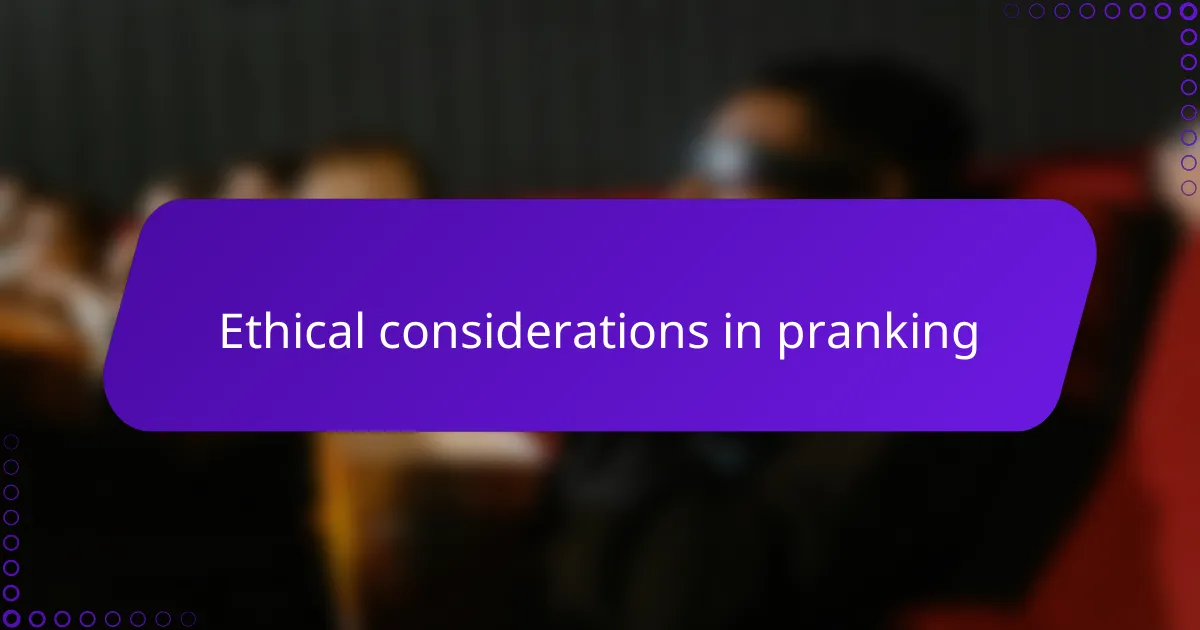
Ethical considerations in pranking
Ethical considerations in pranking are essential because, from my point of view, keeping the prank harmless is what separates fun from cruelty. I remember watching a prank where the joker went a bit too far, and the person genuinely looked distressed—that moment made me question whether entertainment justifies causing discomfort. Isn’t it important to ensure that laughter doesn’t come at the expense of someone’s dignity or feelings?
Another thing I’ve noticed is that informed consent, even if given after the prank, plays a big role in ethics. When participants agree to share their reactions afterward, it feels like a respectful nod to their autonomy. But what about pranks that cross that line before consent is sought—do they still feel fair? This balance is tricky and highlights how producers must tread carefully.
From experience, I also think timing matters ethically—some pranks happen at moments when someone feels vulnerable, and that just doesn’t sit right with me. If a prank exploits stress or anxiety instead of surprise and humor, the impact shifts dramatically. Have you ever thought about how a well-timed joke can brighten a day, but a poorly timed one might leave a lasting sting?
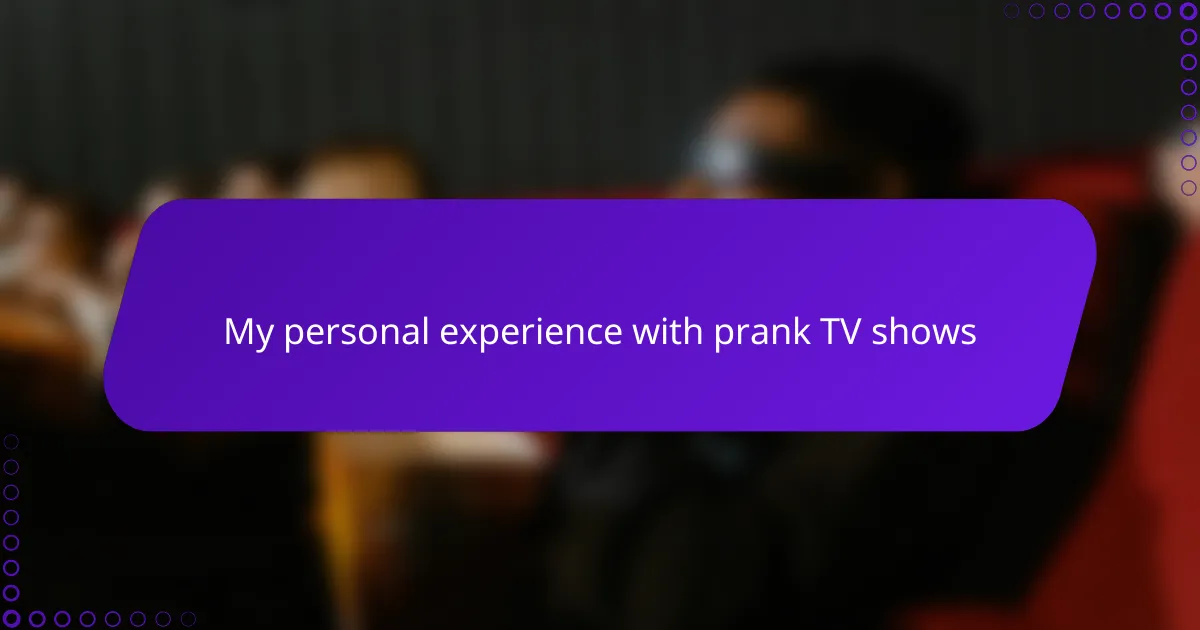
My personal experience with prank TV shows
When I first watched a prank TV show live, I was utterly surprised by how quickly my emotions shifted—from shock to uncontrollable laughter in moments. It made me realize that being part of a prank, even as a viewer, can be an emotional rollercoaster. Have you ever caught yourself laughing not just at the prank but at the genuine confusion on someone’s face? That mix of emotions is something I find incredibly compelling.
I’ve also had moments when watching prank shows made me pause and think about how I might react if I were the one being pranked. Those “what if it were me?” thoughts add a layer of empathy to my viewing experience. Sometimes, I imagine the embarrassment or amusement I’d feel, and it deepens my appreciation for the honesty these shows capture. Isn’t it fascinating how a simple joke can reveal so much about human nature?
One time, while binge-watching a series of pranks on a lazy Sunday, I caught myself sharing the best clips with friends, sparking instant laughter and playful debates about which prank was the most clever. It’s moments like these that make me realize prank TV shows don’t just entertain individually—they create shared memories and inside jokes that linger long after the screen goes dark. Have you ever experienced that kind of unexpected bonding over a funny moment?
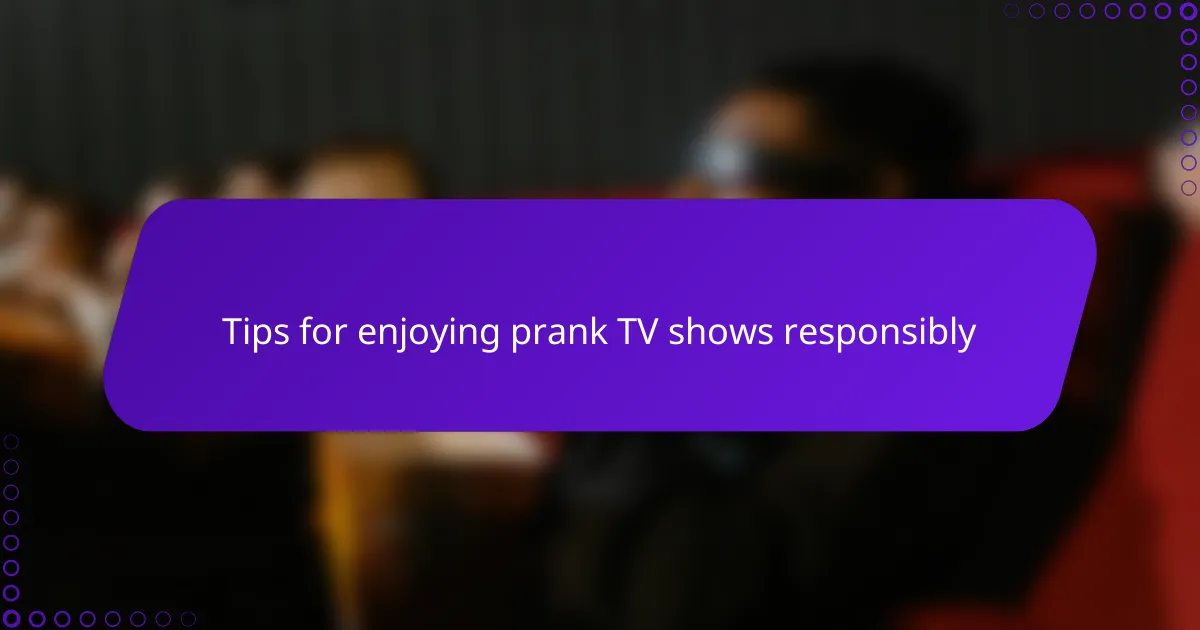
Tips for enjoying prank TV shows responsibly
I’ve found that enjoying prank TV shows responsibly means recognizing when a joke stops being funny and starts feeling hurtful. Sometimes, I catch myself thinking, “Is this person truly in on the joke afterward?” It’s those moments when I remind myself to appreciate the humor without crossing into discomfort.
It also helps me to keep in mind the context of each prank—timing and setting matter a lot. When a prank feels spontaneous but respectful, it’s easier to laugh along. Have you noticed that pranks pulled during lighthearted situations almost always leave everyone smiling, while those during tense moments can fall flat or feel mean-spirited?
Lastly, I try to balance my enjoyment by considering consent and empathy. When participants are okay with sharing their reactions afterward, it adds a layer of respect that makes the whole experience feel more genuine. After all, laughter is best when everyone involved feels good about it, don’t you think?
